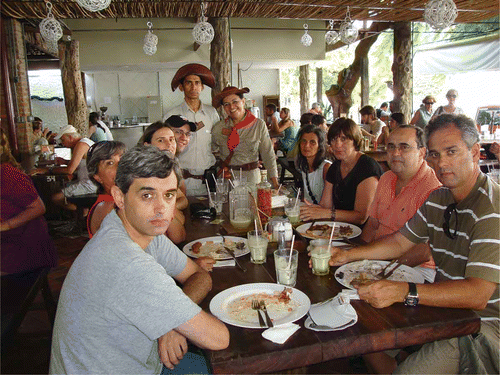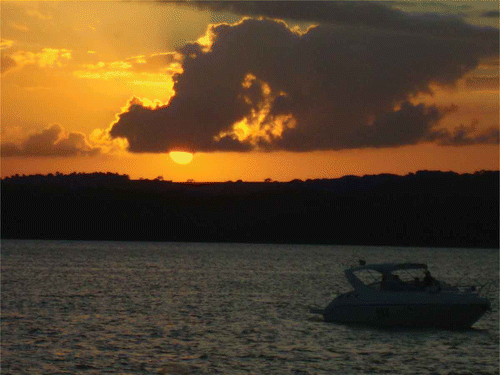8th Ibero-American Workshop on Complex Fluids and their Applications, João Pessoa, Paraíba, Brazil, 8–11 September 2009
The Ibero-American Workshop has been organised biennially since 1993 in different countries of Ibero-America, bringing together physicists, chemists and technologists from various countries, with the aim of improving the scientific research in our community.
The 8th Ibero-American Workshop was held in João Pessoa, capital of the Brazilian state of Paraíba, and, for the first time, physicians and odontologists were among the attendees. The total number of participants was 69, from Brazil, Argentina, Chile, Spain, Portugal and USA. From this number, 26 were graduate students and five undergraduates.
The workshop program had invited lectures, oral communications, posters and a school for students with tutorial courses about the physical-chemistry of complex fluids given by Professors David Weitz (Harvard, USA), Eduardo Soto-Bustamante (University of Chile, Chile), Maria Helena Godinho (New University of Lisbon, Portugal) and Italo N. de Oliveira (Federal University of Alagoas, Brazil).
The multidisciplinary character of the meeting was maintained and some highlights are described below:
| • | Synthesis and design of new azo photoisomerisable discotic liquid crystals. The presentation was focused on the synthesis, structural, thermal and optical characterisation of new tris[1,2,4]triazolo[1,3,5]triazines liquid crystals, the synthesis of new molecules containing an azo (N=N) linkage in their centre and reversible trans-cis-trans photoisomerisation, the luminescent properties of lanthanides ion complexes, particularly Tb(III) and Eu(III), with ligands [1, 2, 5]thiadiazolo[3, 4-f][1,10]phenanthroline, thenoyltrifluoroacetonate and acetylacetonate (presented by H. Gallardo, Brazil); | ||||
| • | Tomography of fluctuations in living cells using the defocusing microscopy. Defocusing introduces a phase difference between the diffracted and transmitted light through a phase object, such that small phase differences result in image contrast at the detection plane. Defocusing microscopy was used to study the motility of living cells and membrane fluctuations of red blood cells (presented by O.N. Mesquita, Brazil); | ||||
| • | Optical nanotomography is a powerful new imaging approach based on the use of polarised light emitted from a tapered optical fibre to investigate the molecular orientation in three dimensions at the nanoscale level. From the images collected in the far field it is possible to obtain a three-dimensional visualisation of the liquid crystal structure with a resolvable volume nearly three orders of magnitude smaller than that attainable by extant methods (presented by C. Rosenblatt, USA); | ||||
| • | Stability of liquid rivulets on horizontal substrates under partial wetting conditions. The model discussed includes the effects of capillarity, fluid–solid interaction and gravity, within the framework of the lubrication approximation (presented by J.A. Diez, Argentina); | ||||
| • | New developments on the study of colloids used as models for solids were presented. Colloidal crystallisation was shown to bring new insights into the crystallisation of solid crystals. A more general behaviour of colloidal glasses, which better mimic more traditional glasses by using deformable colloidal particles rather than hard spheres, was discussed (presented by D. Weitz, USA). | ||||
| • | The spectroscopy and reactivity of molecules in solution was discussed focusing on the effects of the aqueous environment. A theoretical framework was presented where statistical mechanics is incorporated into the formalism to represent the structures of the liquid and couple this with the necessary quantum mechanical method to obtain spectroscopic and structural properties (presented by S. Canuto, Brazil); | ||||
| • | New achiral liquid crystalline azo-containing polymeric materials and composites with ferro- and antiferroelectric properties were presented. A new family of liquid crystalline methacrylate monomers and polymers was successfully made, opening a broad band of possibilities for optical applications (presented by E. Soto-Bustamante, Chile); | ||||
| • | Interesting results about nano- and microfibres electrospun from liquid crystalline cellulosic solutions were reported. These microfibriles were found to curl and twist and were understood on the basis of a model which assumes that tendrils of climbing plants such as passiflora edulis behave as a slender elastic rod with intrinsic curvature and torsion (presented by M.H. Godinho, Portugal); | ||||
| • | Ferrofluid instabilities were investigated by studying the response of a magnetic colloid droplet to a radial magnetic field for two distinct situations: (i) when the droplet is immiscible and confined in a Hele–Shaw cell; (ii) when the magnetic fluid sample is miscible and unconfined (presented by J.A. Miranda, Brazil); | ||||
| • | Interesting multidisciplinary research involving physicists, physicians, odontologists and mathematicians was also presented. The aim was to identify modifications between different states of the human low-density lipoprotein (LDL), in particular, to differentiate the native LDL from the oxidised LDL. The latter is found in atheroma in the circulatory blood system. It was found that native LDL presents a nonlinear optical response completely different from that originating from oxidised LDL. Moreover, it was reported that periodontitis is directly related to the modifications of LDL in humans, favouring the appearance of atheroma (presented by F.A.H. Fonseca and A.M. Monteiro, Brazil). | ||||
In summary, the meeting was very interesting and stimulating, with the attendees actively participating in the discussions. The city and the climate were appropriate for the contact between the participants and the side discussions were very productive and friendly.
The host of the 9th Workshop will be decided soon and we already have two proposals: Brazil (Florianópolis) and Argentina. The National Institute of Science and Technology of Complex Fluids (INCT-FCx) was one of the supporters of this workshop and school.


